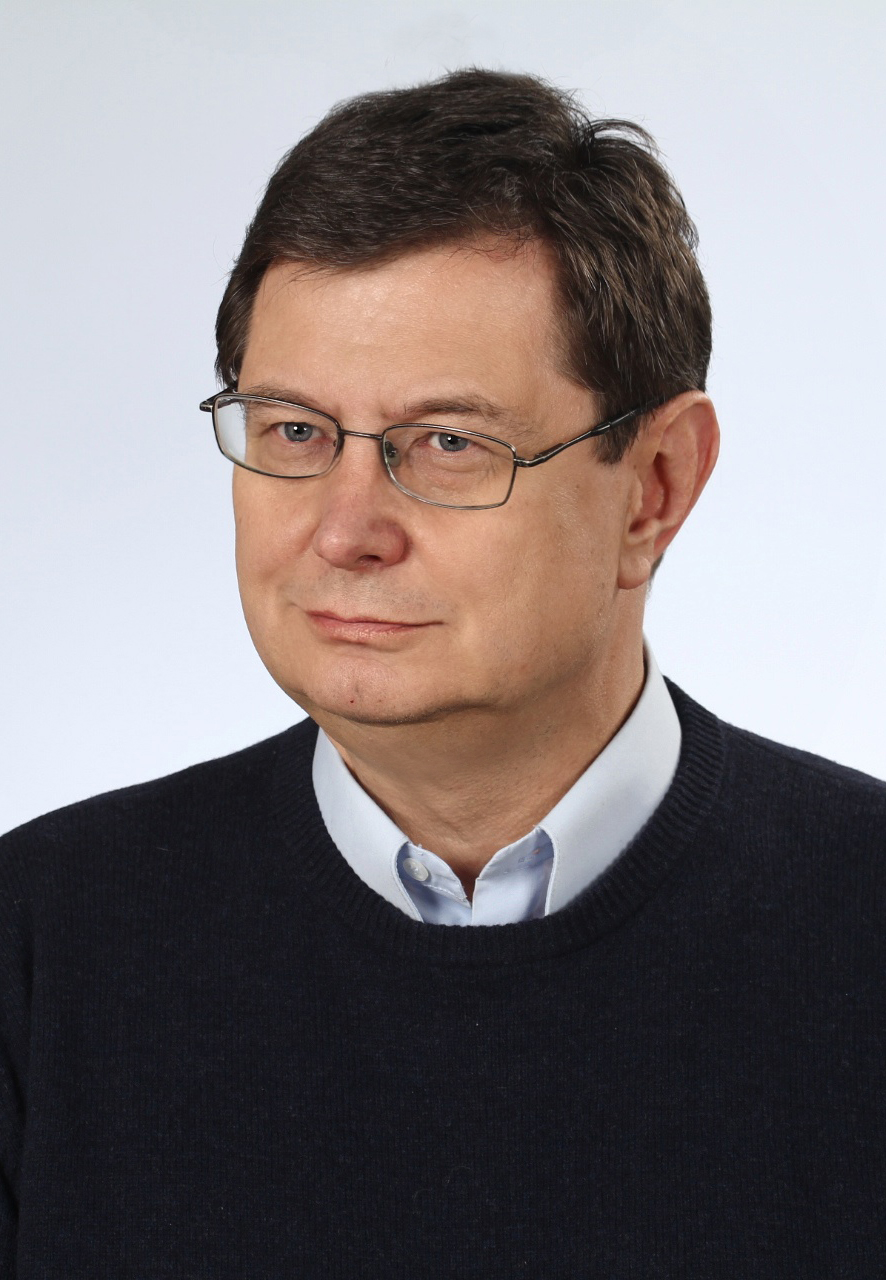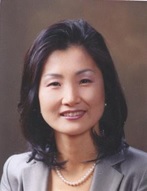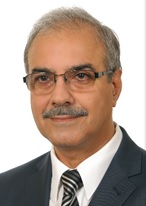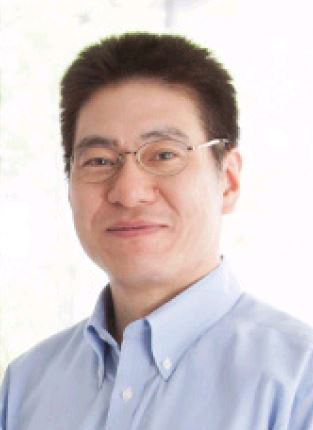Keynote Speakers
In ICBAKE2017, we have four keynotes during conference dates. This page introduces the Keynote Speakers.
 Professor Piotr Porwik
Professor Piotr PorwikAffiliation: Head of the Computer Systems Department, University of Silesia, Katowice, Poland
Biography: Profesor Piotr Porwik has been a Head of the Computer Systems Department at University of Silesia for over 10 years. Currently working at the Institute of Informatics where he gained over ten years experience in the design and development of informatics, digital electronics and biometric classifiers. P. Porwik is also a Board Member of the Faculty of the Computer Science and Materials, University of Silesia for a more than a decade. He specializes in digital image processing, and biometric classifiers. His areas of interest include spectral Boolean function analysis, biometrics and special kind of image processing came from crime scenes.
Prof. Porwik is well versed in the knowledge of various biometric and classification algorithms with strong analytical skills and work experience in academic environments. He was supervisor over of 80 students include four PhD students (as a promoter).
Worldwide scientific work makes also a significant part of his work - he is an author or co-author over 150 published articles in scientific periodic (invited papers, tutorials and keynotes in Japan, India, Czech Republic, Greece and Poland). He is also the author of four published books specializing in digital electronics, informatics and digital signal processing.
Prof. P. Porwik is currently Editor-in-Chief of the Medical Informatics and Technologies Journal (scored by Polish Ministry of Science and Higher Education), as well as a member of the Editorial Board of the International Journal of Biometrics and International Journal of Applied Mathematics and Computer Science.
He is official reviewer in international journals (Neurocomputing, Information Sciences, Pattern Recognition, Int. J. for Light and Electron Optics, Int. J.of Biometrics, Pattern Analysis and Applications) and many others. P. Porwik is a reviewer of the PhD national and foreign dissertations and conference papers. Was invited co-author of special issues in the Journal of Medical Imaging and Health Informatics (2015) and Applied Artificial Intelligence (2016). These issues were devoted to health informatics and electronic health record analysis. In his activity prof. P. Porwik was also organizer of congress special sessions (with awards) dedicated to machine learning in medicine and biometrics.
Title of Keynote: Single and ensemble-based classifiers in biometric recognition
Abstract: In the area of machine learning the concept of combining classifiers is proposed as a new direction for the improvement of the performance of individual classifiers. In machine learning, classification is the problem of identifying to which of a set of categories a new observation belongs, on the basis of a training set of data containing observations whose category membership is known. Classification and clustering are examples of pattern recognition, which is the assignment of some sort of output value to a given input value. An algorithm that implements classification in a concrete implementation is known as a classifier.
The goal of classification result integration algorithms is to generate more certain, precise and accurate systems. This strategy brings a good solutions in biometrics as well as in medicine, where classifiers support the diagnosis process. Classifiers operate on the set of features and these features have to be reliably selected. Additional, uncorrelated errors made by individual classifiers can be overcome by voting.
During lecture advantages as well as disadvantages of single and ensemble-based classifiers will be shown. For example, ensemble of classifiers outperforms any single classifier but learning time of a single classifier is mostly shorter. During the speech, representative examples of biometric cases as well as medical diagnosis will be also given and it will be compared with various classification methods. It will be also noted that features which are used in classifiers training stage can be unbalanced and even can be incomplete. Missing data can create problems for analyzing data, imputation is seen as a way to avoid pitfalls involved with listwise deletion of cases that have missing values. Influence of some data imputation methods on classifiers accuracy will be also performed.
 Professor Young Im Cho
Professor Young Im ChoAffiliation: Faculty of Computer Engineering, Gachon University, South Korea
Biography: Professor Young Im Cho got bachelor's, master's, and doctoral degrees in Computer Science from Korea University in South Korea. She got Post-Doc. Degree at University of Massachusetts at 2000 in USA. Now she is Chiefs of AI and Smart City Laboratory at Gachon University, Korea-Kazakhstan ICT Cooperation Center and Intelligent Service Robot Automation System Society. She is a Chief of Smart City Forum in Korea. She was ex-committee member of National Information Strategy Council under Korea President, and worked as a senior research at Samsung Electronics. She is a member of e-Government committee member in Korea Government. She was a visiting professor at Purdue University in USA from 2013 to 2014. She has published more than 300 publications including Journals, conferences. Also she has 13 text and reference books. She received a big medal from Korea Government at 2013, and 15 academic awards from academic societies. She is a member of more than 15 editorial boards of international journals and conferences. Her interesting areas are Artificial Intelligence, Smart City, Big data, Cloud Robot and e-Government and etc.
Title of Keynote: Intelligent Smart City Platform
Abstract: Smart City platform have been developed in the city and national level. From Smart City, IoT is an important means to resolve current issues. Technical elements of the IoT is sensing, wired and wireless communications, network, service interfaces, big data, security etc.
Usually, Machine-to-Machine communications (M2M) is a phenomenon that has been proceeding quietly in the background. Current international standard was presented as a reference model in One M2M which is leading IoT. The four areas are IoT service-centric platform, data-centric platform, connectivity-centric platform, and device platform.
To avoid creation of competing M2M standards the 7 standards developing organizations, that publish telecom standards: TTC, ARIB (Japan), ATIS, TIA (USA), TTA (Korea) CCSA (China), ETSI (Europe) started the OneM2M Global Initiative to develop one globally agreed M2M Specification with initial focus on Service Layer. OneM2M aims to consolidate current M2M Service Layer standards activities such as ETSI TC M2M (Europe), TIA TR-50 (USA) and CCSA TC 10 (China), and to reduce standardization overlap and confusion and provide ongoing standards support to enhance interoperability, reduce market fragmentation, and improve security and reliability. (Ref: http://www.eclipse.org/proposals/technology.om2m/).
However, there is no international standardized IoT platform including data, service, connectivity and device, what is more there is no clear national standardized platform satisfy the reference model that is presented by oneM2M institute which is a leading organization to establish an international IoT standardized platform.
In this seminar, I am going to talk about some topics like following: IoT and Smart City basic, IoT International platform focusing on OneM2M reference model, components and model description for IoT platform. Thank you.
 Professor Khalid Saeed
Professor Khalid SaeedAffiliation: Faculty of Computer Science, Bialystok University of Technology, Poland
Biography: Professor Khalid Saeed is a BSc, MSc, PhD and DSc Degrees holder. He is a Computer Science full professor (Biometrics, Image Analysis and Processing) at Faculty of Computer Science with Bialystok University of Technology. He also works with the Faculty of Mathematics and Information Sciences, Warsaw University of Technology. He was with AGH Krakow in 2008-2014. He has published more than 200 publications - edited 27 books, Journals and Conference Proceedings, 11 text and reference books. He received 19 academic awards. Khalid Saeed is a member of more than 15 editorial boards of international journals and conferences. He is an IEEE Senior Member and has been selected as IEEE Distinguished Speaker for 2011-2016. Khalid Saeed is the Editor-in-Chief of International Journal of Biometrics with Inderscience Publishers.
Title of Keynote: A Simple Biometrics Image Descriptor
Abstract: There exist many methods for image digital description of objects as one of the important steps before image classification for object recognition. Examples of such methods are momentum expressions based, Fourier descriptors (DFT), geometric features, structural approaches, statistical approaches ? PCA, SVD and LDA, MPEG-7 for shape description, c and many other known methods based on neural networks, genetic algorithms, hidden Markov chains and so on. These descriptors represent the image code by introducing the image characteristics through what is called the feature vector. Biometrics images are examples of rather specific objects, the human biometric features, and require special care in selecting their descriptor. In the talk the speaker will consider some easy to compute feature vectors based on the modified Circulant Toeplitz matrix minimal eigenvalues. Theory and practice will be considered with biometrics images as examples.
 Professor Jiro Okuda
Professor Jiro OkudaAffiliation: Faculty of Computer Science and Engineering, Kyoto Sangyo University, Japan
Biography: Professor Okuda majored in earth sciences and engineering in Graduate School of Engineering, Tohoku University, Japan, but changed his area to medical sciences and received his PhD from Tohoku University Graduate School of Medicine, where he studied behavioral neurology, neuropsychology, cognitive neuroscience, and medical imaging techniques. After obtaining the PhD, he worked for several neuroscience research projects in Japan (Tohoku University and Tamagawa University Brain Science Institute), and also conducted his original research work on gbrain mechanisms underlying prospective memoryh in the Institute of Cognitive Neuroscience (ICN), University College London (UCL), UK as a visiting scientist (funded by a post-doctoral fellowship for research abroad from Japan Society for the Promotion of Science). He is famous for his pioneering studies on functional brain imaging of prospective abilities in humans such as prospective memory and episodic future thinking (a.k.a. prospection). He has been a professor in the Faculty of Computer Science and Engineering, Kyoto Sangyo University over the past decade, where he dedicated his research and education to integrating brain sciences, information sciences, and their applications. His interests are how physiological signals from the brain and body could be measured, analyzed, modeled, decoded, and applied to various systems.
Prof. Okuda has recently joined in a couple of cross-disciplinary, nation-wide research grant projects in Japan (Grant-in-Aid for Scientific Research on Innovative Areas) that aimed to develop a novel research area through collaboration of multiple fields. It includes foundation of gneural information science for communicationh (https://dynamicbrain.neuroinf.jp/hetero/en/index.html), in which he started a collaborative study to explore interaction of neural networks between two brains that enabled successful formation of artificial symbolic communication systems shared by two persons. Another ongoing project, goscillologyh (http://www.nips.ac.jp/oscillology/) is trying to understand ghuman natureh from a viewpoint of coupled oscillatory networks of nonlinear neural dynamics.
Prof. Okuda has also been a core member of Neuroimaging Platform (NIMG-PF, https://nimg.neuroinf.jp/?ml_lang=en) Committee, Japan Node of International Neuroinformatics Coordinating Facility. Through the activity of constructing and providing a web-based database of brain activity coordinates reported in neuroscience papers, the platform aims to establish and enlarge a new academic field of gNeuroinformaticsh for both experts and non-experts in the public.
Title of Keynote: Interacting with information in the brain
Abstract: A major approach in traditional neuroscience has been to examine brain responses to specific experimental stimuli, mental states, or behavioral performances. It has successfully uncovered variety of componential functions of the brain that must be essential to our cognition and behavior. In recent years, a gradual increase in the interest in more advanced utility of brain sciences has put forward expansion of the fields towards understanding of social interaction in real life, decoding of mind states from brain activity data, brain-machine interfacing, neurofeedback training for implicit self-regulation, and so on. These novel directions commonly involve a standpoint of interaction of neural information processing in various levels, e.g., neural interaction within the brain, across peoples, brain-to-devices, and brain-to-mind. Thus the new approaches are not just useful for development of real-life applications, but also expectable in opening up a new avenue to elucidating a principle for adaptive reorganization of brain-mind-environment relationship that is currently almost unknown. The present talk will summarize recent trends in the applied neuroscience research fields, with a couple of example studies on interactive modulation of our motivated behavior and communication.
